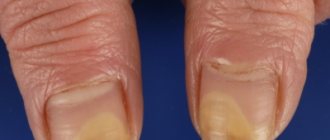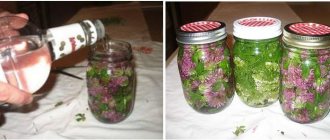Nasal congestion is a common health problem that causes significant discomfort. This unpleasant condition is caused by various factors, but most often the decisive role is played by swelling of the mucous membrane of the nasal passages. It occurs due to excessive blood flow to the area of inflammation.
The nose swells with a runny nose, regardless of the reasons that caused the illness. The problem cannot be ignored, since a prolonged runny nose with swelling can be complicated 3. Treatment should be carried out immediately using proven methods and medications. The myth that a runny nose goes away on its own has long been dispelled.
Causes of swelling of the nasal mucosa
Swelling of the nasal mucosa during a runny nose can be caused by the following reasons:
- Infection
. Infectious rhinitis is often caused by viruses and is part of the manifestations of ARVI. In the absence of proper treatment or the presence of predisposing factors, bacteria join the viruses, and the inflammation becomes purulent. - Violation of vascular tone in the mucous membrane
. Because of this, their inadequate expansion or contraction occurs1. The problem most often provokes is the abuse of vasoconstrictor drugs. - Allergic reaction
. This refers to allergic rhinitis, which occurs during the flowering period of plants. Less often it is provoked by: dust, animal hair. - Traumatic injury
. Swelling occurs almost immediately after injury, and the timing of its disappearance varies from person to person4. - Adenoids
. Enlargement of the nasopharyngeal tonsil contributes to swelling and congestion in childhood1.
Galazolin
Galazolin nasal drops are great help even with a severe runny nose, when it is difficult to breathe. This remedy for the common cold helps to quickly relieve nasal congestion, reducing swelling of the mucous membrane. “Galazolin” for a runny nose is suitable as an “ambulance” for a runny nose if your nose is stuffy in the evening, but you can only get to the doctor in the morning. "Galazolin" relieves inflammation of the Eustachian tube and widens the passages so that air can pass freely. After using these drops for a runny nose, breathing immediately improves without producing a lot of mucus. The positive effect lasts about six hours. At the same time, doctors do not recommend using Galazolin nasal drops for a long time, so as not to develop an addictive effect.
The active substance of this remedy for the common cold is xylometazoline hydrochloride. Allergies to it do not develop, so even pregnant and lactating women can use Galazolin. If you follow the correct dosage of the drug, the active substance is practically not absorbed into the blood.
Galazolin
Medana Pharma SA (Medana Pharma), Poland
Under the influence of Galazolin, arterial vessels narrow.
As a result, the swelling of the mucous membrane of the nasal passages decreases, and the amount of discharge decreases. Relieving swelling helps restore patency of the nasal passages, Eustachian tube and sinus openings. After using Galazolin, the effect develops after 5-10 minutes. The duration of the vasoconstrictor effect is 8-12 hours. If the dosage is observed, clinically significant absorption of the drug is usually not observed. from 28
5.0 1 review
915
- Like
- Write a review
How does the problem manifest itself?
Swelling of the mucous membrane during a runny nose can be recognized by the following symptoms:
- Difficulty in nasal breathing;
- Itching sensation in the nose;
- Burning sensation.
A person may also experience headaches, fever, and watery eyes. More specific symptoms depend on the cause of the swelling.
Swelling of the nasal passages can be seen by looking into the nose in the light or shining a flashlight. The mucous membrane will look swollen and reddened. Most often, it is difficult to examine the membrane due to discharge, so it is recommended to do this after cleansing the nose with salt water.
Accompanying illnesses
If the disease is not treated, very soon you may stop smelling, the mucous membrane atrophies, which means you have no protection against the penetration of microbes into the body. The nasal shells undergo a change in structure; they thicken and expand. To bring them back to normal, surgery will be required.
Pus accumulated in the sinuses infects the hearing organs, pharynx, bronchi and lungs. Frequent tonsillitis, sinusitis, laryngitis, headaches are constant companions of this disease. Sometimes the sinus contents break through the thin wall and enter the brain, causing meningitis. Once in the blood, the infection poisons the entire body.
How to recognize the cause of nasal swelling and the type of runny nose?
Treatment of a runny nose, accompanied by swelling of the mucous membrane, should influence the cause of the disease. Nasal congestion accompanies many diseases, but in order to choose the right methods and drugs for treatment, you need to be able to distinguish between them.
Swelling of the nose without a runny nose is usually the result of injury or any defects in the cartilaginous and bone structures of the nose 3. The problem bothers the person constantly and is not particularly amenable to any treatment methods.
Pronounced purulent discharge in large quantities often indicates a bacterial infection. Additionally, the following symptoms may appear:
- Temperature increase;
- Cough;
- A sore throat;
- Body aches;
- Marked weakness.
If the discharge is serous, that is, transparent and liquid, resembling water, then we can talk about a viral infection. A distinctive feature will be the sudden appearance of symptoms and their connection with hypothermia and contact with other patients.
An allergic reaction is characterized by the appearance of swelling and runny nose at a certain time. Rhinitis is caused by direct contact with the allergen. A runny nose will bother you during the flowering period of the plant, when you are near certain flowers, bushes or trees. A reaction to animal fur appears upon contact with them (can affect all animals or specific species). Specific signs of an allergic nature of a runny nose: lacrimation, frequent sneezing, itching and burning sensation in the nose, the appearance of clear discharge.
Diagnostics
To get rid of a runny nose and nasal congestion, you need to establish their cause, otherwise the treatment will not bring results, or the results will be short-lived. First of all, you need to see a doctor, in this case an otolaryngologist.
In most cases, the diagnosis becomes obvious immediately after examining the nasal cavity using a special instrument - anterior and posterior rhinoscopy.
Sometimes additional research is required:
- endoscopy is the gold standard for diagnosing ENT diseases in children and adults;
- radiography of the nasopharynx in a lateral projection (allows you to differentiate adenoids from other diseases of the nasopharynx in young patients);
- computed tomography of the paranasal sinuses (used to diagnose neoplasms);
- rhinofluometry is a method that allows you to quantify the degree of nasal breathing impairment;
- polysomnography (indicated for diagnosing sleep apnea);
- allergy tests (to determine the allergen for allergic rhinitis);
- consultations with other specialists, for example: endocrinologist, allergist, surgeon.
After making a final diagnosis, the doctor will prescribe the necessary treatment.
Up to contents
General principles for troubleshooting
- Rinse the nose with hypertonic saline solutions at room temperature;
- Use of vasoconstrictor drops;
- Avoiding hypothermia and drafts;
- Normalization of diet;
- Removing accumulations of mucus from the nasal cavities (especially important if we are talking about infants who begin to refuse mother's milk).
It is not recommended to use heating, as are any untested herbal, alcohol and other folk remedies.
Use proven tools
Traditional medicine, which was once almost the basis for doctors of various specialties, is becoming a thing of the past. Scientific research allows us to evaluate the true effects of certain drugs for the treatment of various pathologies. For example, it has been found that eating garlic may have a beneficial effect in preventing colds, but there is little scientific evidence for this. Therefore, I urge you to be wary of folk remedies, since most of them have not been tested by scientific research or have been proven to be ineffective.
Features of treatment depending on the cause
Swelling with a runny nose caused by a viral infection requires the use of local and (or) systemic immunomodulators and antiviral agents. Bacterial inflammation requires the use of antibiotics. Additionally, symptomatic treatment is used if necessary (antipyretics and other drugs).
Allergy, first of all, involves eliminating the factor that causes it, that is, a specific allergen. Medications include antihistamines and sometimes inhaled corticosteroids (hormones). Frequent showering and nasal rinsing will help relieve symptoms, as they reduce the concentration of the allergen on the person and in the nasal mucosa 2.
Vasomotor rhinitis can also be treated with nasal hormones. Additionally, physical therapy is encouraged. If the disease was caused by vasoconstrictor drops, then they must be abandoned and replaced temporarily with local hormonal therapy until the swelling is relieved. Such treatment has its own characteristics and must be prescribed by a specialist.
Sanorin
These drops for runny nose help reduce the symptoms of rhinitis literally from the first use. Sanorin can completely cure a runny nose in about five days. The active substance of “Sanorin” for the nose is naphazoline nitrate, it constricts blood vessels, reduces the secretion of snot, drying out the mucous membrane.
"Sanorin" can be bought in the form of drops, spray or emulsion. This remedy for the common cold helps with chronic rhinitis, sinusitis, sinusitis and other problems with the nasopharynx. Sanorin drops may contain eucalyptus oil or aloe extract. But it should be noted that this drug for the common cold is contraindicated for those who have high blood pressure, a tendency to tachycardia, any problems with blood vessels, or eye diseases. The maximum course of treatment with Sanorin is seven days (for children - no more than three days).
Sanorin
TEVA, Ukraine
Sanorin is a vasoconstrictor drug for topical use in ENT practice.
Alpha2-adrenergic agonist. When applied topically, it has a rapid, pronounced and long-lasting vasoconstrictor effect on the vessels of the mucous membrane (reduces swelling, hyperemia, exudation). Facilitates nasal breathing during rhinitis and reduces swelling during conjunctivitis. After 5-7 days, tolerance occurs. from 55
649
- Like
- Write a review
Marimer - helper for a runny nose
Marimer
is a line of medications aimed at helping combat nasal swelling and runny nose.
The product contains sea water collected at great depths, far from the shore. The medicine is used for careful and gentle rinsing of the nose at any age. Marimer Forte
is best suited for relieving edema - this is a hypertonic solution of sea water in the form of a nasal aerosol, suitable for adults and children over 1 year of age.
Unlike saline solutions made at home, Marimer Forte contains a wide composition of trace elements, is sterile and has a high safety profile. Marimer Forte
helps thin mucus and makes it easier to remove from the nose. For allergic rhinitis, the drug helps remove allergens from the nasal mucosa 5.
Advantages of Marimer:
- The innovative spray system provides deep and gentle irrigation and promotes the effective effect of microelements5;
- Complete protection of the bottle from bacteria and viruses helps maintain the sterility of water until it enters the nasal passages;
- There is no risk of the drug getting into the auditory tubes;
- Availability of an innovative attachment for children from birth ( Marimer Baby
)6.
Prevention of rhinitis
To prevent inflammation of the nasal cavity and accompanying rhinorrhea, it is necessary:
- avoid prolonged hypothermia, which can increase the body's vulnerability to rhinoviruses;
- reduce contact with sick people during seasonal colds and flu;
- eat right, monitor the balanced composition of the menu and the presence of fortified foods in it;
- During the heating season, humidify the air in the house and ventilate the rooms often.
One of the most effective preventive measures is irrigation therapy. It consists of daily one-time irrigation of the nasal cavity with medications based on sea salt. This measure helps to cleanse the turbinates and sinuses of potentially dangerous microorganisms before they begin to actively multiply. Allergens, dust and other substances that irritate the mucous membranes are also washed away. During colds, irrigation therapy helps to significantly reduce the likelihood of illness.










